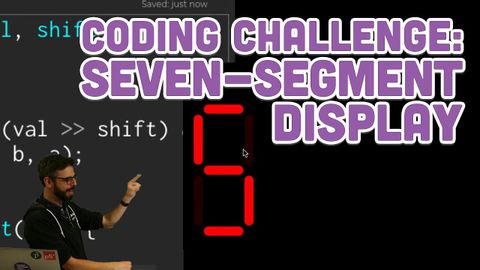コーディングチャレンジ #117: 7セグメント表示 (Coding Challenge #117: Seven-Segment Display)
林宜悉 が 2021 年 01 月 14 日 に投稿  この条件に一致する単語はありません
この条件に一致する単語はありません- v.t./i.出場する;計算する;思う;思う
- n.姿 : 体形;数字;人物像;図表;著名人;姿の輪郭;数字
- n. (c./u.)気持ち;分別ある判断力;意味
- v.t./i.(感覚器官で)感知する : 気づく;感じる
US /əˈmaʊnt/
・
UK /ə'maʊnt/
- n. (c./u.)量 : (金)額
- v.i.総計(いくらかに)達する
エネルギーを使用
すべての単語を解除
発音・解説・フィルター機能を解除

